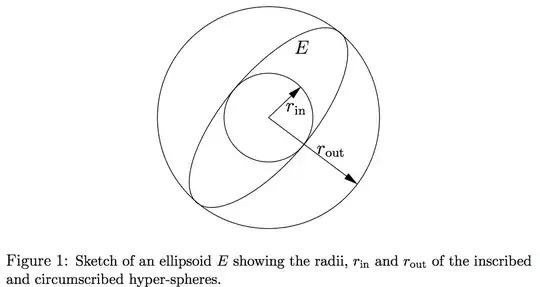I would like to add some more simple and practical examples to the one provided by Joseph O'Rourke.
So as explained you need 1st to find eigenvectors from A, in Matlab, there is an 'eig' command. But in order to understand what you are doing, you can find a practical example in the document by Peter O. Brown "Ellipse and Linear Algebra" starting with page 5.
In order to get eigenvector representing a semimajor axis of an ellipse, take eigenvalue with smaller absolute value. Next, you need to calculate an angle between eigenvector and (e.g.) x-axis. One of simplest explanations about how to do that could be found here or google for more pro one.
